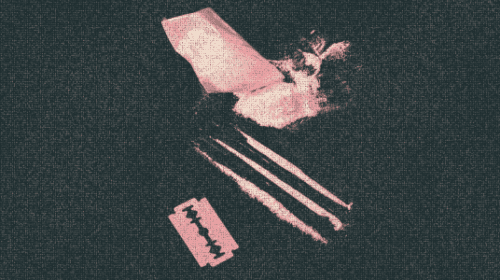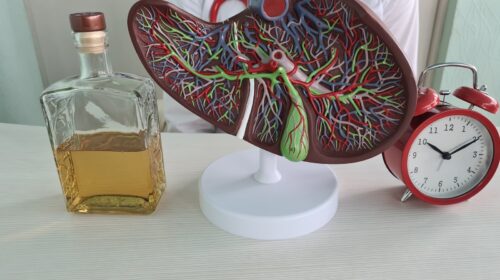Lexapro is a selective serotonin reuptake inhibitor (SSRI) antidepressant drug that’s commonly used to treat depressive disorders, anxiety disorders, and other mental health disorders. Regular use of Lexapro does not typically lead to physical dependence in the same way that substances like opioids or benzodiazepines do.
However, discontinuation of Lexapro, especially abruptly, can lead to withdrawal symptoms, indicating a physiological adaptation. Withdrawal symptoms may occur if Lexapro is stopped abruptly or the dose is significantly reduced without gradual tapering.
Let’s explore more about Lexapro withdrawal, its symptoms and risks, and the best way to stop taking the drug.
What Is Lexapro?
Lexapro (escitalopram) is a popular antidepressant that’s widely prescribed in the US. It’s an SSRI that can treat depression, anxiety, obsessive-compulsive disorder, and panic disorder.
Antidepressants like Lexapro are among the most common prescription medications. Just over 13% of adult Americans report taking antidepressant medication in the past month from 2015 to 2018.[1] Among people who take antidepressants, about one in four people have been taking the medication for 10 years or longer. [2]
Depending on the condition, Lexapro may be prescribed for many years until the person feels they don’t need it any longer or if they develop negative side effects. However, getting off Lexapro or switching to another antidepressant requires planning, as this drug can have significant withdrawal symptoms.
Lexapro Withdrawal Symptoms

SSRIs like Lexapro affect serotonin levels, a mood-regulating neurotransmitter in the brain. Over time, the body gets used to the presence of the drug and builds tolerance and physical dependence. Stopping or cutting back the dosage abruptly can cause withdrawal symptoms.
Most SSRIs take time to build up, which is why it can take weeks to see if the drug is having a positive effect on the symptoms of depression or anxiety. Similarly, the brain can’t adapt to a sudden change in medication when you stop Lexapro cold turkey.
About 56% of people experience withdrawal symptoms when stopping an antidepressant.[3] SSRIs can affect the brain in different ways, however, so the withdrawal symptoms can range from mild to severe. Lexapro is likely to have moderate withdrawal symptoms.
The most common symptoms of Lexapro withdrawal include:
- Dizziness
- Chills
- Confusion
- Trouble concentrating
- Muscle tension
- Memory issues
- Uncontrollable crying
Though less common, other symptoms may occur with Lexapro withdrawal:
- Changes in motor control like chewing movements or restless legs
- Nausea
- Vomiting
- Diarrhea
- Appetite loss
- Flu-like symptoms
- Lightheadedness
- Difficulty walking
- Panic
- Suicidal ideation
- Nightmares or vivid dreams
- Insomnia
- Brain zaps, a feeling like an electrical shock in the brain
- Pins and needles sensation
- Ringing in the ears
While most withdrawal symptoms from Lexapro are uncomfortable, they are generally not life-threatening. However, a significant concern during discontinuation is the potential for a return or worsening of depression and anxiety symptoms, which may include suicidal ideation. Large-scale studies have shown an association between discontinuing antidepressants and an increased risk of suicide attempts. [4]
This is a significant risk to watch for during withdrawal. If you or a loved one begins experiencing strong symptoms of depression, seek medical help immediately. The signs may include an unhealthy preoccupation with death and dying, engaging in self-destructive behaviors, giving away belongings, experiencing intense mood swings, and planning out suicide.
Lexapro Quick Reference
Drug Category: SSRI
Commercial & Street Names: None
DEA Schedule: Uncontrolled
Administration: Oral
Lexapro Withdrawal Timeline
Withdrawal symptoms are most likely to occur when most of the Lexapro is gone from the body, which is based on the medication’s half-life. This is the time it takes for half the medication to leave the body, which is about 30 hours for Lexapro. This half-life falls about midway through the range of antidepressant half-lives.
After about three days, the withdrawal symptoms may begin. In some cases, they may begin within hours, but some people may not experience the first withdrawal symptoms for a week or longer. Regardless of when the symptoms begin, they typically peak and subside within a few weeks. However, some people may have a longer withdrawal period.
Struggling with Lexapro misuse or abuse? Get help today.
Lexapro Tapering
It may be tempting to quit Lexapro cold turkey if you’re experiencing negative side effects or want to switch medications, but doing so significantly increases the likelihood of severe withdrawal.
Lexapro dosage should be reduced slowly using a tapering schedule under the guidance of a doctor. This involves gradually reducing the daily dosage of Lexapro over the course of weeks to minimize withdrawal symptoms. This gives the body an opportunity to adjust to lower levels of the drug.
If you want to switch medications, your doctor may choose to begin a tapering schedule and transition to another antidepressant or a combination medication. However, you should never take it upon yourself to adjust your dosage, stop taking your medication, or take a different medication without your doctor’s recommendation.
Medical Detox for Lexapro
Detox is often associated with drugs of abuse like heroin or meth, but it’s not limited to addictive substances. If withdrawal symptoms are severe enough to disrupt your daily responsibilities, harm your quality of life, relapse, or put you at risk of severe depression and self-harm, entering a detox program is a smart decision.
With medical detox, you can safely discontinue Lexapro with a medically supervised taper schedule and a compassionate staff to keep you as safe and comfortable as possible. While there’s no drug to eliminate antidepressant withdrawal, medical support can help with intense symptoms like nausea, dizziness, headache, and insomnia.
Quit Lexapro Safely
If you want to stop taking Lexapro, it’s important to speak to your doctor about a taper schedule to minimize withdrawal symptoms. if your symptoms are severe, or you’re at risk of worsening depression and suicidal ideation, medical detox can provide you with a safe, medically supervised environment to allow the drug to clear your system.
Related Topics You May Find Helpful:

























